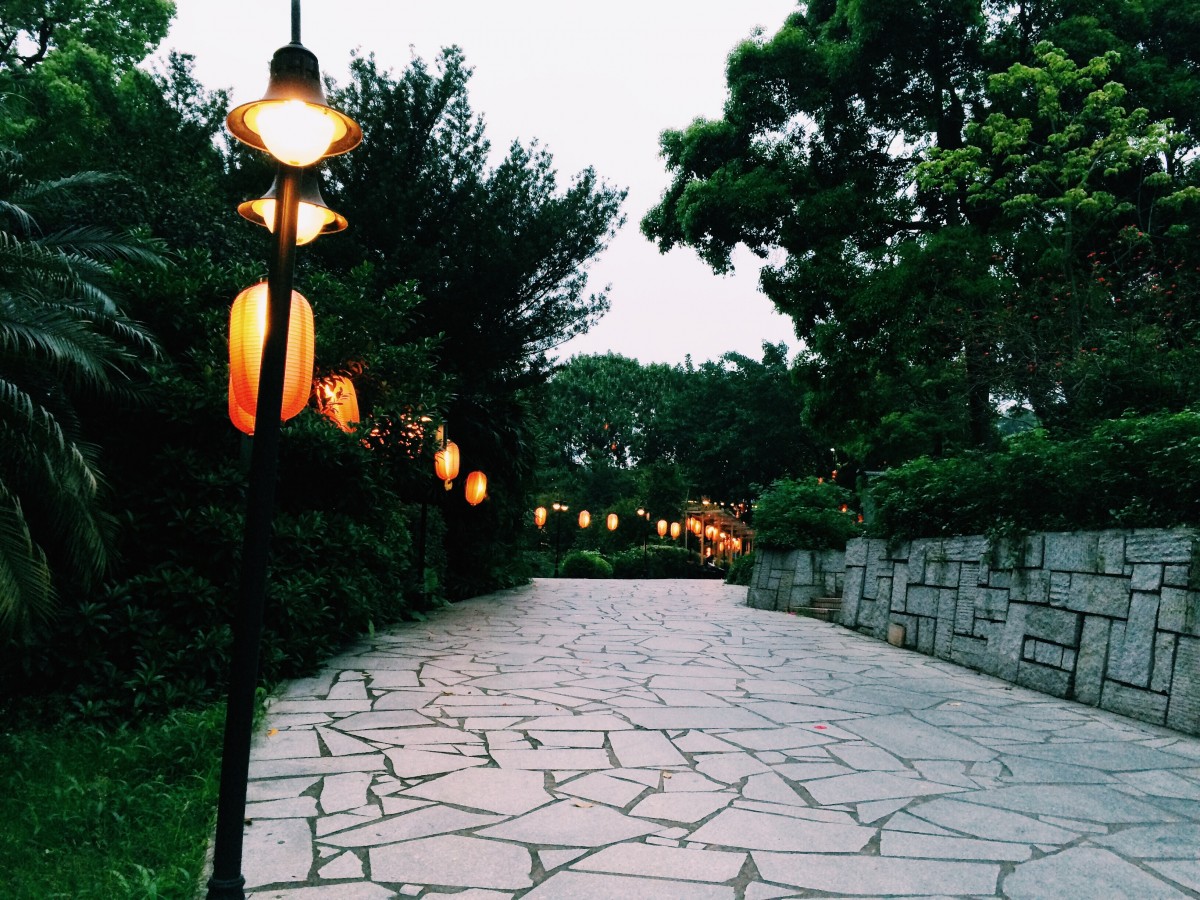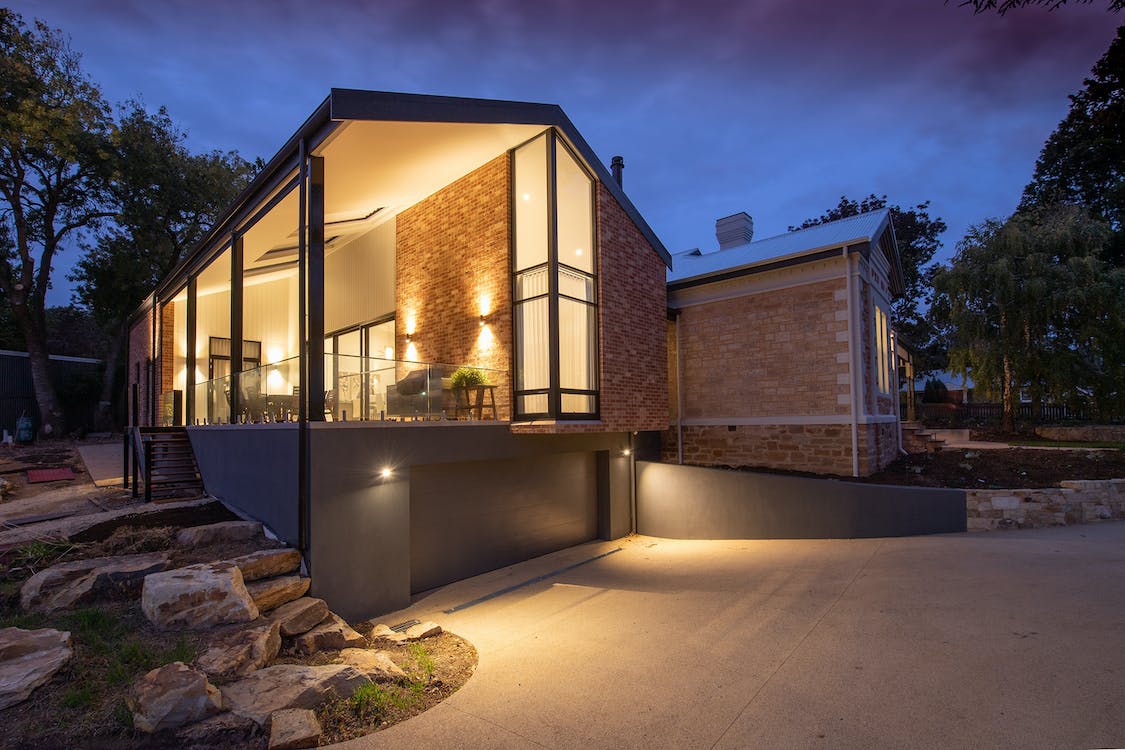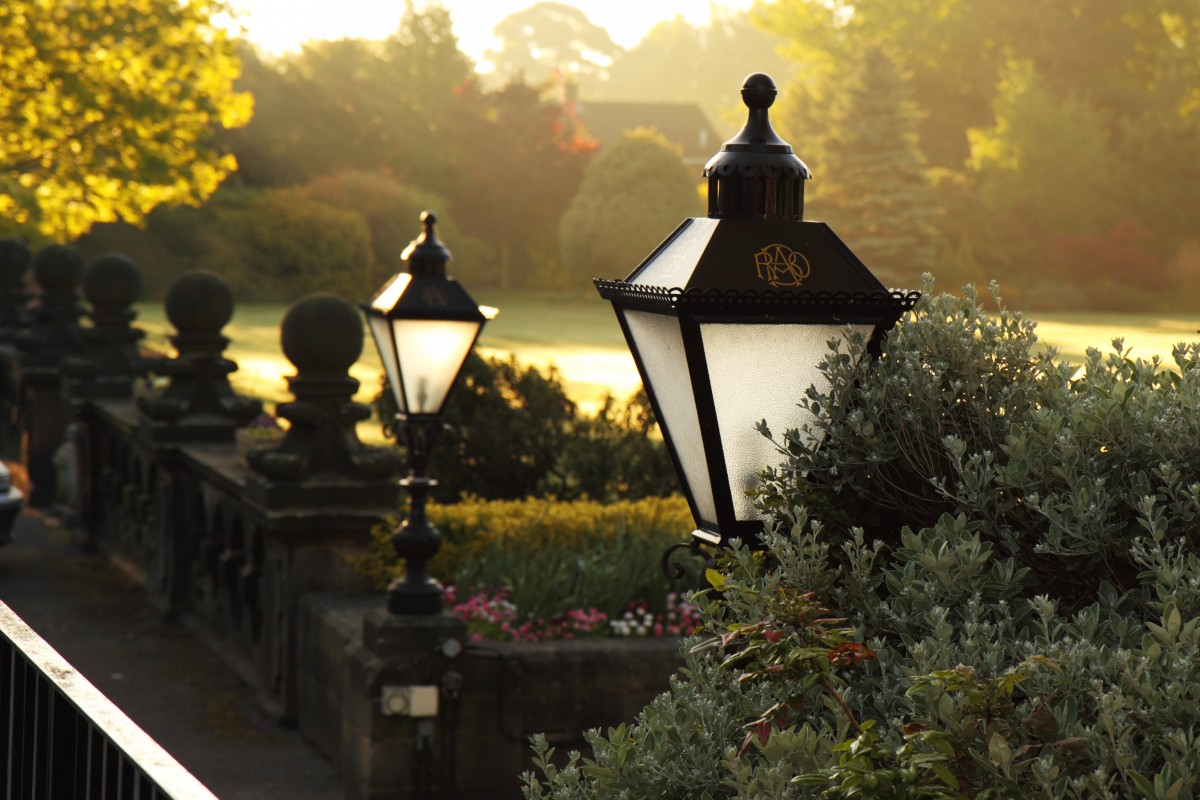
To make the most of the summer evenings, pathways, terraces, groves, and trees are all enhanced by outdoor lighting.
Pathways
To mark the path, the ideal is to install, on each side and at regular distance, low bollards or spotlights placed at ground level that diffuse a soft light without dazzling. Placed along the pathways, these systems guide visitors by indicating the path, but above all, they offer a very welcoming aspect in all seasons.
The terrace

To illuminate the dining area, direct light points should be favored by attaching sconces to the walls. You can also create an impression of volume and a personalized atmosphere with indirect lightings, such as spotlights integrated into the terrace tiles that will delimit its surface and multiply the punctual light sources by scattering here and there photophores, lanterns, garlands of light, oil lamps…
Trees and flowerbeds

In this case, the choice of lighting is determined by the size and density of the foliage of the trees and the volume of the vegetation. Thus, trees with a lot of foliage and conifers will be particularly highlighted with a directional spotlight that will light the subject from the bottom to the top. As for species with sparse foliage, they will reveal their silhouette under a light placed very close to their trunk. For flower or shrub beds, favor diffused lighting at different heights to create relief and shadow effects that will enhance the volume of the plantings.
What type of lighting to choose?
The range of outdoor lighting fixtures is vast. The choice is made according to the garden’s configuration, the lighting’s location, and the desired light intensity: halogen (powerful lighting) for large and dense trees and LED. The latter, more economical, are mainly used to mark a path and create an atmosphere in a bed or terrace. LEDs are more resistant in longevity, low energy consumption, and are easy to implement.
What aesthetic approach to adopt to light his garden?
With the equipment available today, the possibilities are endless. Two main principles must nevertheless be observed. The first is to avoid over-lighting. To create a pleasant atmosphere, it is better to keep some shaded areas. In a 50 m2 garden, two to three light points placed at well-considered angles can be more than enough. The second rule is to direct the spotlights toward the frame and not toward passing places or the neighborhood. Otherwise, the inhabitants will be dazzled. Otherwise, everyone is free to choose the elements of the decor to highlight: a beautiful flowerbed, a flowerbed, or a corner decorated with a gazebo … Some species are, however, difficult to enhance. Beech trees require very powerful spotlights. On the other hand, trees with long or curved leaves, such as yuccas and palms, can be lit with small spotlights, as they project light well.
Are there any safety standards that must be met?
The intervention of a professional is, in general, required. Unless the user uses only very low-voltage safety lamps. Another priority is to buy compliant lamps, able to withstand bad weather, and a transformer with adequate power, calculated according to the number of light points desired… The installation does not require digging trenches that would distort the landscape: the wires can be laid out on the edge of flowerbeds and covered with bark, or buried with a few pickaxe strokes under a lawn, to secure the passage of the lawnmower.
How to proceed with the installation?
During the day, we think about the overall project and install the equipment. We then connect the cables to the transformer, installing the lamps by radiating on about thirty meters around the house. At night, we check the rendering. And we adjust the position of the spots until we obtain the desired effect.
What type of lighting fixtures should I choose?
It all depends on the use. On a façade, portholes or wall lights work wonders. For flowerbeds, which change with the seasons, it is better to use mobile sources, easy to move. Small spotlights offer great comfort of use. They can be embedded in a low wall, hung on a branch, or placed on the ground. And therefore oriented as the user wishes: from the bottom to the top to highlight a slender tree or in crossed lights to underline a plant canopy… To mark out a path, a pair of bollards broadcast at ground level proves to be an effective solution. Another solution is to replace some of the paving stones on a path with glass rectangles that contain LEDs.
